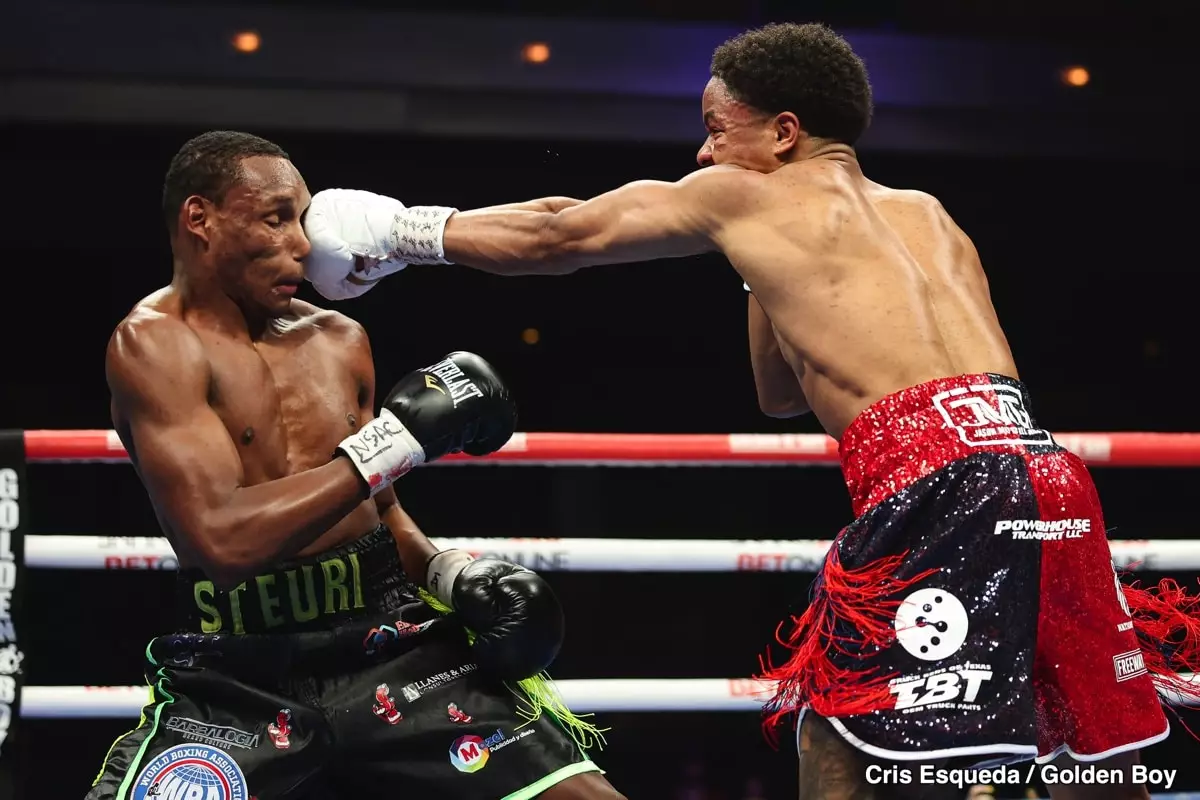The anticipation for the February 22nd bout between WBC lightweight champion Shakur Stevenson and rising star Floyd ‘Kid Austin’ Schofield has sparked considerable debate within boxing circles. Prominent figures in the sport, like Abdullah Mason, have expressed strong opinions on the outcome, asserting that Schofield stands little chance against Stevenson. At the heart of this analysis is the juxtaposition of experience and skill, the promotional choices behind this fight, and the psychological implications that may influence the match’s outcome.
A heavyweight narrative in boxing often revolves around experience versus youth. Shakur Stevenson, boasting an impressive 22-0 record with 10 knockouts, has gradually proven himself against some formidable opponents. In contrast, Schofield, at 22 years of age and an 18-0 record (12 KOs), is stepping into a ring with a seasoned champion rather than facing a more manageable contender. The disparity in their experiences against elite opposition raises questions about Schofield’s readiness. Mason’s critique highlights the crux of the matter—Schofield may not be battle-hardened enough to cope with Stevenson’s multifaceted boxing style.
Schofield’s inexperience is accentuated further when considering his last performance against Rene Tellez Giron, characterized by unimpressiveness. This observation not only casts doubt on Schofield’s capabilities but raises concerns about his selection as Stevenson’s opponent. Many wonder if the decision was influenced more by marketing potential rather than merit, suggesting a troubling shift in how opponents are chosen in boxing.
When Turki Al-Sheikh’s card was announced, Schofield’s selection as Stevenson’s opponent raised eyebrows. It becomes evident that the fight might be more about spectacle than a fair competitive match-up. Mason posits that Schofield’s rising profile on social media played a significant role in this decision. This pivot towards social media clout over traditional merit raises ethical questions within boxing. Are promoters prioritizing online presence at the expense of fair competition?
Furthermore, the absence of substantial promotional activity surrounding the fight is notable. Schofield has maintained a relatively quiet presence since his selection, potentially suggesting a lack of confidence or readiness for the upcoming challenge. Mason’s sentiments about the promotional aspect reflect a broader concern that fights are often curated for marketability rather than sporting integrity, potentially jeopardizing the authenticity of matchups in professional boxing.
A significant layer to the impending confrontation lies in psychological warfare. In his remarks, Mason candidly discusses the “fear” Stevenson may exhibit against adversaries capable of inflicting real damage. His narrow victory over Edwin De Los Santos serves as a testament to this claim, revealing that Stevenson may have a ceiling when faced with hard-hitting opponents. Mason suggests that Schofield’s style, while commendable, is not equipped to exploit Stevenson’s vulnerabilities effectively.
The mental aspect of boxing often dictates the outcome as much as physical capabilities. While Stevenson has battled elite fighters, the question remains: how has he mentally prepared for this fight? If Schofield is capable of planting seeds of doubt or instilling fear in Stevenson, he might stand a better chance than initially expected. Nevertheless, Mason rules this possibility out, underscoring the current perception that Schofield lacks both the experience and the psychological edge to capitalize on any potential slip-ups from Stevenson.
Intriguingly, the discourse around this fight doesn’t just end with a potential victor on February 22nd. Abdullah Mason’s commentary hints at a possible future bout between himself and Schofield, emphasizing the unpredictable nature of boxing. If Schofield assumes the role of the underdog in this match, a loss might not necessarily truncate his career. History shows that many fighters rebound and forge successful paths after setbacks.
While anticipation builds for the Stevenson-Schofield fight, it is essential to scrutinize the elements at play, be they experience gaps, promotional tactics, or psychological factors. As fans eagerly await the clash of styles, it remains to be seen how these variables will unfold in the ring. Whether this bout marks the twilight of Schofield’s budding career or serves as a catalyst for his growth will ultimately depend on how he navigates the gauntlet laid out by Stevenson.

